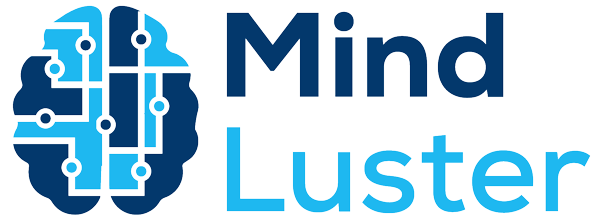تحميل Computer Science A Level Compilation
Computer Science
روابط التحميل
يوجد صيانة لقسم تحميل الدورات لذلك يمكنك مشاهدة الدورة بشكل مباشر من هنا بدلا من التحميل لحين الانتهاء من صيانة القسم
-
Data Types CS50 Shorts
-
Operators CS50 Shorts
-
Variables and Scope CS50 Shorts
-
Strings Intro to Computer Science
-
Random Numbers How Software Works
-
Is Anything Truly Random
-
Exceptions in Python || Python Tutorial || Learn Python Programming
-
Functions CS50 Shorts
-
4 Decomposition Abstraction and Functions
-
CS Principles Functions with Parameters
-
OCR A Level Global and local variables
-
Recursion CS50 Shorts
-
Programming Paradigms Computerphile
-
4 Programming Paradigms In 40 Minutes
-
Programming Across Paradigms • Anjana Vakil • GOTO 2017
-
Object oriented Programming in 7 minutes | Mosh
-
8 1 What is Object Oriented Programming OOP Processing Tutorial
-
Object Oriented Programming
-
8 Object Oriented Programming
-
Pong Object Oriented Programming Computerphile
-
Data Structures Crash Course Computer Science 14
-
Data Structures Algorithms 1 What Are Data Structures
-
Anjana Vakil Immutable data structures for functional JS | JSConf EU
-
Data Structures CS50 Shorts
-
Arrays
-
Text Files in Python || Python Tutorial || Learn Python Programming
-
Abstract data types
-
Queues CS50 Shorts
-
Stacks CS50 Shorts
-
Data Structures Trees
-
Data structures Introduction to Trees
-
AQA A Level Trees Binary trees
-
Coding Challenge 65 1 Binary Search Tree
-
Lecture 5 Binary Search Trees BST Sort
-
Hash Tables CS50 Shorts
-
What is a HashTable Data Structure Introduction to Hash Tables Part 0
-
Data Structures Hash Tables
-
Hash Tables and Hash Functions
-
10 Dictionaries
-
6 Recursion and Dictionaries
-
1 1 Vectors The Nature of Code
-
Game Math Theory VECTORS
-
What is a vector David Huynh
-
AQA A Level Vectors Part 1 Overview representation
-
Graph Traversals Breadth First and Depth First
-
Algorithms Graph Search DFS and BFS
-
Lecture 13 Breadth First Search BFS
-
Tree Traversal Depth First and Breadth First Search
-
Introduction to Reverse Polish Notation RPN
-
Reverse Polish Notation and The Stack Computerphile
-
Reverse Polish Notation RPN
-
AQA A Level Reverse Polish Notation Part 1
-
AQA A Level Reverse Polish Notation Part 2
-
Linear Search CS50 Shorts
-
OCR GCSE 2 1 Linear search
-
Linear Search | GeeksforGeeks
-
Binary Search CS50 Shorts
-
Data structures Binary Search Tree
-
Bubble Sort CS50 Shorts
-
Algorithms Bubble Sort
-
Merge Sort CS50 Shorts
-
CS50 Shorts Merge Sort
-
Lecture 3 Insertion Sort Merge Sort
-
Dijkstra s Algorithm Computerphile
-
OCR A Level Dijkstra s shortest path
-
Puzzles Programming Problems Think Like a Programmer
-
How anyone can use computer science principles to solve everyday problems | Rameez Virji | TEDxYYC
-
Improving Your Coding Problem Solving Skills
-
Intro to Algorithms Crash Course Computer Science 13
-
Lecture 1 Algorithmic Thinking Peak Finding
-
OCR GCSE 2 1 How to produce algorithms using pseudocode and flow diagrams
-
This Canadian Genius Created Modern AI
-
Visitas Thinks Big 2016 Abstraction by Professor David J Malan
-
Software Development Tutorial What is object oriented language
-
Functional Programming Haskell Computerphile
-
Learning Functional Programming with JavaScript Anjana Vakil JSUnconf
-
C Data Abstraction
-
5 Data Abstraction 6 001 SICP 2004
-
AQA A Level Problem abstraction reduction
-
Computational Thinking Decomposition
-
25 Introduction to decomposition
-
OOP Principles Composition vs Inheritance
-
Composition over Inheritance
-
The Rise of the Machines – Why Automation is Different this Time
-
The big debate about the future of work explained
-
A Level Comp Sci Finite State Machine
-
AQA A Level Finite state machines
-
Computers Without Memory Computerphile
-
Regular Expression
-
Regular Expressions Regex Tutorial How to Match Any Pattern of Text
-
AQA A Level Regular expression
-
Regular Languages
-
Regular Languages Finite Automata Solved Problem 1
-
Operations on Regular Languages
-
Designing Regular Expressions
-
AQA A Level BNF and syntax diagrams
-
Backus Naur Form
-
Regular Expressions and BNF Backus Naur Form
-
Introduction to BNF Backus Naur Form A Level
-
BNF in Real Life Intro to Computer Science
-
Backus Naur Form
-
Algorithms Summary CS50 Shorts
-
1 Course Overview Interval Scheduling
-
CS50 2017 Lecture 3 Algorithms
-
What Is Big O Comparing Algorithms
-
Introduction to Big O Notation and Time Complexity Data Structures Algorithms 7
-
Big O Notation
-
Big O notation in 5 minutes — The basics
-
Big O Notations
-
Lecture 23 Computational Complexity
-
P vs NP and the Computational Complexity Zoo
-
10 Understanding Program Efficiency Part 1
-
11 Understanding Program Efficiency Part 2
-
Computing Limit Computerphile
-
Can we keep building ever more powerful computers Is there no limit | Pete Beckman | TEDxUChicago
-
Quantum Computers Explained – Limits of Human Technology
-
10 Limits of Computation
-
13 Classification
-
16 Complexity P NP NP completeness Reductions
-
Turing The Halting Problem Computerphile
-
Impossible Programs The Halting Problem
-
Lecture 44 65 The Equivalence of Turing Machines
-
L19 Uncomputable Functions and Introduction to Complexity
-
Three Problems in Computable Probability Theory
-
The Halting Problem
-
The Halting Problem An Impossible Problem to Solve
-
Why Machines That Bend Are Better
-
Turing Machines Explained Computerphile
-
Alan Turing Crash Course Computer Science 15
-
Alan Turing Celebrating the life of a genius
-
Classification of Numbers Natural Whole Integers Rational Irrational Real Nerdstudy
-
Ordinals vs Cardinals and how many algebraic numbers are there
-
Introduction to number systems and binary | Pre Algebra | Khan Academy
-
Why Do Computers Use 1s and 0s Binary and Transistors Explained
-
Where did Bytes Come From Computerphile
-
Kilobyte or Kibibyte
-
How Computers Calculate the ALU Crash Course Computer Science 5
-
AQA A Level Unsigned binary arithmetic
-
AQA A Level Two s complement
-
Binary Plusses Minuses Why We Use Two s Complement Computerphile
-
Floating Point Numbers Computerphile
-
OCR A Level Floating point binary Part 1
-
AQA A Level Rounding absolute relative errors in binary
-
Binary 5 – Floating Point Range versus Precision
-
AQA A Level Floating point normalisation
-
Representing Numbers and Letters with Binary Crash Course Computer Science 4
-
OCR A Level Character Sets
-
Lesson 6 6 How numbers are encoded as characters in ASCII
-
AQA A Level Error checking and correction
-
AQA A Level Bit patterns and data
-
AQA A Level Analogue and digital data signals
-
Vector vs Bitmap
-
Raster Bitmap Graphics Versus Vector Graphics What is the difference
-
Image File Formats JPEG GIF PNG
-
Representing Sound in Binary
-
What is Midi And How does it Work
-
Data Compression as Fast As Possible
-
Compression Computerphile
-
Compression Crash Course Computer Science 21
-
Lossy and Lossless RLE Compression
-
What is Encryption and How Does it Work | Mashable Explains
-
Encryption as Fast As Possible
-
Cryptography Crash Course Computer Science 33
-
What is cryptography | Journey into cryptography | Computer Science | Khan Academy
-
Cryptography The Science of Making and Breaking Codes
-
Hackers Cyber Attacks Crash Course Computer Science 32
-
Basics of Hardware and software | Computer Awareness Lesson 7
-
Hardware vs Software Which is more important
-
Hardware vs Software Digital Video Computerphile
-
Classification of software
-
System Software
-
OCR GCSE 1 7 The purpose and functionality of systems software
-
OCR GCSE 1 7 Operating systems part 1
-
OCR GCSE 1 7 Operating systems part 2
-
OCR GCSE 1 7 Utility system software
-
Operating Systems Crash Course Computer Science 18
-
What is an Operating System as Fast As Possible
-
AQA GCSE SLR12 Characteristics and purpose of different levels of programming language
-
AQA GCSE SLR12 Assemblers compilers and interpreters
-
GCSE SLR12 The purpose of translators
-
Boolean Logic Logic Gates Crash Course Computer Science 3
-
AND OR NOT Logic Gates Explained Computerphile
-
Introduction to Logic Gates
-
Building a 4 Bit Adder using Logic Gates
-
Boolean Algebra 1 – The Laws of Boolean Algebra
-
OCR A Level Simplifying Boolean algebra
-
What s Inside Your Computer
-
Inside your computer Bettina Bair
-
What is a Core i3 Core i5 or Core i7 as Fast As Possible
-
Address Data and Control Buses
-
CPU Buses Guide to the A Certification Exam 04 03
-
OCR A Level ALU CU Registers and Buses
-
The CPU and Von Neumann Architecture
-
Von Neumann Architecture Computerphile
-
OCR A Level von Neumann and Harvard
-
Instructions Programs Crash Course Computer Science 8
-
AQA A Level The processor and its major components
-
AQA A Level Fetch decode execute cycle
-
Instruction Set Architectures
-
RISC vs CISC
-
COA | Addressing Modes | Bharat Acharya Education
-
Low Level vs High Level Programming Languages
-
The First Programming Languages Crash Course Computer Science 11
-
AQA A Level Interrupts
-
Program Interrupted Computerphile
-
OCR A Level Performance of the CPU
-
What Factors Affect CPU Performance
-
AQA A Level Input and output devices
-
OCR GCSE 1 3 The need for secondary storage
-
OCR A Level Moral social ethical issues Part 1
-
OCR A Level Moral social ethical issues Part 2
-
OCR A Level Moral social ethical issues Part 3
-
OCR A Level Moral social ethical issues Part 4
-
OCR A Level Moral social ethical issues Part 5
-
What s the Difference Between Parallel and Serial
-
Synchronous and Asynchronous Transmission
-
Baud Rate Bit Rate Bandwidth and Latency
-
Network Topologies Star Bus Ring Mesh Ad hoc Infrastructure Wireless Mesh Topology
-
OCR A Level Client sever Peer to peer
-
AQA A Level Introduction to WiFi
-
AQA A Level The Internet and how it works
-
AQA A Level Structure of the Internet
-
AQA A Level The TCP IP stack and MAC addresses
-
AQA A Level Routable and non routable IP addresses
-
IPv4 Addressing Lesson 2 Network IDs and Subnet Masks
-
Private public IPs vs static dynamic
-
DHCP Explained | Step by Step
-
Network Address Translation Computerphile
-
Port Forwarding Explained
-
The Client Server Model | Clients and Servers
-
AQA A Level Thin client and thick client computing
-
Entity Relationship Diagram ERD Tutorial Part 1
-
Entity Relationship Diagram ERD Tutorial Part 2
-
Relational Databases How to Choose |¦| SQL Tutorial |¦| SQL for Beginners
-
SQL Tutorial | Relational Databases and Key Terms Explained
-
Basic Concept of Database Normalization Simple Explanation for Beginners
-
SQL A Quick Overview |¦| SQL Tutorial |¦| SQL for Beginners
-
Client and Server Model Fast Tech Skills
-
AQA A Level The client server model
-
Intro to Big Data Crash Course Statistics 38
-
Big Data as Fast As Possible
-
AQA A Level Basics of functional programming
-
A Level Comp Sci First Class Objects
-
AQA A Level Function partial function application
-
AQA A Level Composition of functions
-
Functional Programming For Dummies
-
AQA A Level List operations in functional programming
-
AQA A Level Analysis and design of algorithms
-
AQA A Level Implementation
-
AQA A Level Testing
-
AQA A Level Test strategies
-
AQA A Level Test data user feedback
-
AQA A Level Evaluation
تحميل Computer Science A Level Compilation Computer Science ، دروس تحميل Computer Science A Level Compilation ، تحميل برابط مباشر و مشاهدة تحميل Computer Science A Level Compilation ، تعليم الاطفال تحميل Computer Science A Level Compilation ، البداية لتعلم تحميل Computer Science A Level Compilation ، تحميل Computer Science A Level Compilation ، تحميل كورس تحميل Computer Science A Level Compilation
Trends
Accounting Finance course
Graphic design tools for beginners
Create a facebook business Page from Scratch
Customizing type for logos
Best zoology books
Web Design 101 Free Full Course
Programmatic Access to MongoDB
Organic Chemical Technology
Xcode UI design for beginners
Graphic Design Basics
Graphic Design | Photoshop
Networking for Beginners
Advanced Logo design methods
Application with Spring 5 0 and Angular 6
German reading practice for advanced learners
Microsoft Office Excel 2010
Web Design for Beginners
Web Design Using HTML CSS
Accounting and Bookkeeping fundamentals
r DNA technology


